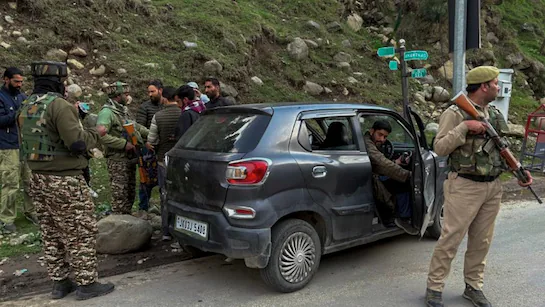India’s Own ‘Iron Dome’: How Akashteer Air Defence System Foiled Pakistani Drone and Missile Attacks
- Abhishek

On the night of May 8–9, 2025, India witnessed a massive air assault attempt from across the western border. In a coordinated strike, Pakistani Armed Forces launched drones and missiles targeting multiple cities across northern and western India, including Srinagar, Jammu, Amritsar, Bathinda, and Chandigarh—regions close to key defence installations.
What could have been a major national security breach was quickly neutralised, thanks to India’s indigenously developed Akashteer Air Defence System (ADS), often hailed as the Indian equivalent of Israel’s Iron Dome.
What is Akashteer? India’s Indigenous Air Defence Nerve Centre
Akashteer is a state-of-the-art Air Defence Control and Reporting System (ADCRS) developed by Bharat Electronics Limited (BEL) under the Atmanirbhar Bharat initiative. It serves as the digital brain of India’s ground-based air defence units, integrating data from a wide array of sensors and radars—such as AWACS (Airborne Warning and Control Systems) and AEW&C (Airborne Early Warning and Control) platforms—to provide a real-time unified view of Indian airspace.
Launched under a ₹1,982 crore defence contract in March 2023, the system’s phased induction began in 2024. As of November 2024, BEL had already delivered 107 units out of the total 455 systems ordered, with full deployment expected by March 2027.
How Akashteer Saved Indian Cities on May 8–9, 2025
The overnight attack by Pakistan came as a retaliation to India’s surgical strikes on terror camps in Pakistan and PoK, conducted under Operation Sindoor. In response, Pakistan launched a barrage of drones and missiles, violating ceasefire norms and targeting civilian zones near the Line of Control (LoC) and International Border (IB).
In an immediate counteraction, India activated its multi-layered air defence grid, with Akashteer playing a central rolein intercepting aerial threats. Working in tandem with the S-400 Sudarshan Chakra system, Akashteer ensured not a single hostile projectile reached its target.
The system swiftly coordinated detection and destruction of every incoming threat, showcasing its real-time threat mapping and response capabilities.
Key Features of the Akashteer Air Defence System
-
360° Airspace Monitoring: Utilises 3D Tactical Radars, Low-Level Lightweight Radars, and the Akash Weapon System to form a real-time digital map of enemy aerial movements.
-
Automated Threat Engagement: Eliminates manual data entry through automated command and control, ensuring split-second engagement of supersonic threats that can cover 18 km in a minute.
-
Decentralised Decision-Making: Allows frontline troops to take swift engagement decisions without waiting for central command, while still maintaining safeguards to prevent friendly fire.
-
Inter-Force Integration: Seamlessly fuses data from the Indian Army Air Defence (AAD) and the Indian Air Force (IAF), ensuring a single, shared air picture from top command down to tactical units.
-
Future-Ready Architecture: Built with communication redundancy for reliability under attack and scalable software/hardware to integrate future upgrades.
A Technological Milestone in India’s Defence Landscape
Akashteer’s successful deployment during the May 2025 incident is a defining moment for Indian defence technology. It proves that India no longer has to rely solely on imported defence platforms to secure its skies. The system’s effectiveness not only foiled Pakistan’s nefarious designs but also showcased India’s growing self-reliance in critical military tech.
In the words of a senior Indian defence official, “Akashteer has turned India’s air defence network into a smart, automated fortress that watches and reacts before the enemy even knows it’s being watched.”
Conclusion
With Akashteer, India has entered a new era of airspace dominance and rapid threat response. Designed, developed, and deployed entirely in India, this system is more than just a defence asset—it is a symbol of Atmanirbhar Bharat in action.
As tensions persist along the borders, systems like Akashteer are set to play a critical role in safeguarding the nation’s skies, ensuring that any threat—no matter how advanced—meets a swift and effective response.








